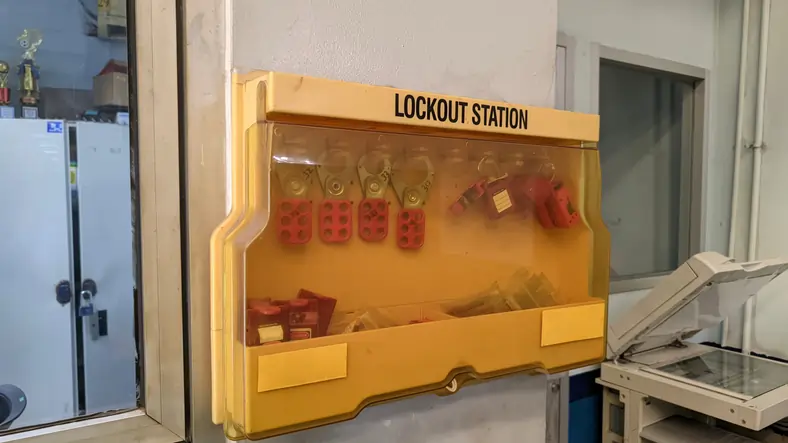
Lockout Stations Usage in Manufacturing Facilities
Safety is of the utmost importance in the rapid environment of the manufacturing industry. Lockout stations are among the many safety measures implemented and are essential in protecting the health and safety of workers and the smooth functioning of activities. Lockout/tagout (LOTO) procedures are a critical component of workplace safety in industrial plants. These stations serve as centralized hubs that house the tools and equipment necessary for conducting LOTO procedures.
A lockout station is essentially a special place that is equipped with padlocks, hasps, tags, and other essential equipment to isolate energy sources and lock machines during maintenance or repair. These stations are relevant because they prevent personnel from being exposed to potential dangers by preventing the unintentional startup or operation of equipment.
This article will address the essential principles of lockout/tagout procedures and the pivotal role that lockout stations play in implementing these protocols within production environments.
Lockout/Tagout (LOTO) Processes
During equipment repair, service, or maintenance, following the fundamental safety standards known as lockout/tagout (LOTO) procedures is essential to protect workers from hazardous energy sources. LOTO processes aim to de-energize, isolate, and render equipment and machinery inoperable to avoid unintentional restart or release of stored energy.
There are usually several critical steps in the process. Employees begin by categorizing the many mechanical, electrical, hydraulic, pneumatic, and gravitational energy sources connected to the machinery. Then, they put the energy-isolating devices in the neutral or off position by locking them with the proper lockout mechanisms, including hasps and padlocks.
Following the isolation of power sources, employees will affix lockout tags to the equipment to show that it is not to be operated while maintenance is being done. In case other employees come into contact with the machinery, these tags will act as a visual reminder and caution. To top it all off, before any work starts, it is common practice to conduct a thorough verification process to ensure that all energy sources have been properly isolated.
Regarding worker safety and meeting regulatory standards, LOTO processes are essential.
What Role Does It Have?
A lockout station is an essential part of any industrial facility’s lockout/tagout protocol. These specialized stations act as gathering places where employees can get the materials and instructions they need to carry out LOTO processes properly.
Lockout stations are designed to offer a specific and convenient place to keep lockout items, including padlocks, hasps, tags, and paperwork related to lockout/tagout procedures. This equipment saves time and effort by centralizing all of these resources, making it easier to start and finish LOTO operations with less room for human mistakes. RS has the best offerings of a variety of lockout stations.
Great Visual Reminders
Lockout stations are also great visual reminders to keep everyone safe and ensure everyone follows the lockout/tagout procedures. These stations, strategically placed throughout the building, highlight the organization’s dedication to the safety of its employees and foster a culture of safety awareness among workers.
Lockout stations are multipurpose—they store and organize items. Still, they can also include training resources, instructional materials, and communication tools to help with continuous education and training on lockout/tagout protocols. These stations enable workers to follow safety rules and make the workplace safer by giving readily available information and tools.
Lockout stations are constructed with components that have been carefully chosen and arranged to simplify the execution of lockout and tagout operations in manufacturing facilities in a manner that is both safe and effective. The offer of convenient access to lockout devices, tools, documentation, and educational resources is only one of the many ways these stations contribute significantly to promoting workplace safety and fulfilling legal obligations.


